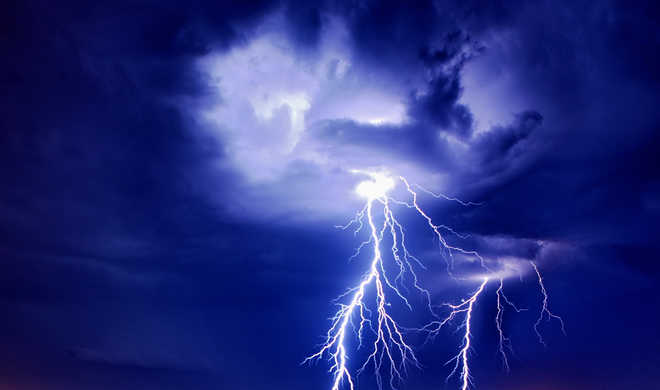
Photo for representational purpose only.
Washington
A NASA rocket mission is set to form white artificial clouds that will glow in the night sky, to study disturbances in the upper atmosphere that interfere with communication and technology systems.
The artificial clouds will be visible to residents of the Republic of the Marshall Islands during two rocket flights to occur between August 29 and September 9, the US space agency said.
The Waves and Instabilities from a Neutral Dynamo (WINDY) mission will study a phenomenon that occurs in the ionosphere - a layer of charged particles in the upper atmosphere.
Known as equatorial spread F (ESF) these disturbances occur after sunset at latitudes near the equator in part of the ionosphere known as the F region.
The disturbances interfere with radio communication, navigation and imaging systems and pose a hazard to technology and society that depends on it.
The WINDY mission consists of two NASA suborbital sounding rockets that will be launched nearly simultaneously in a window between 8 and 11 pm local time from August 29 through September 9 from the island of Roi-Namur .
The Kwajalein Atoll in the Marshall Islands is near the magnetic equator, where post-sunset ionosphere storms are more intense, making the site an ideal location for these studies, NASA said.
One rocket will carry a substance called tri-methyl aluminium (TMA), which will form the white artificial clouds that glow in the night sky.
Scientists on the ground photograph the movement of these clouds to measure the winds and energetic particles that are in motion in the upper atmosphere. The clouds are expected to be visible for about 30 minutes.
The first rocket launched, a two-stage 47-foot long Black Brant IX rocket, will carry and release both TMA and lithium.
The release of the lithium vapours is not visible to the naked-eye but can be viewed with special cameras on the ground.
Both TMA and lithium, which are harmless to residents on the ground when released at these altitudes, move with the atmospheric winds and can therefore be used to determine the wind speeds and direction over the area where these ionosphere storms are occurring.
TMA reacts spontaneously on contact with oxygen to produce a pale white glow visible from the ground.
For the WINDY mission, sunlight reflected by the Moon, will illuminate lithium producing an emission that can be detected with cameras equipped with narrow-band filters.
Using moonlight allows the launches to occur later in the evening when the critical ESF conditions occur.
The second rocket, a two-stage 36-foot long Terrier- Malemute, will be launched five minutes after the first rocket.
It will carry instruments to measure ionosphere densities and electric and magnetic fields present in these storms.
The ionosphere is defined as the layer of Earth's atmosphere that is ionised by solar and cosmic radiation.
Ionisation occurs when incoming energetic radiation strips electrons from atoms and molecules, creating temporarily charged particles. —PTI



























